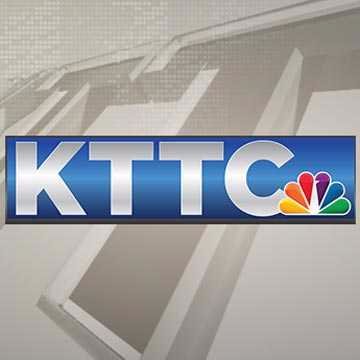WGEM — Members of the Illinois House Ethics and Elections Committee discussed a proposal Wednesday allowing counties to go primarily to a vote at home system.
Cost of Elections
Voice of San Diego — Registrar of Voters Michael Vu faces the logistical headache of all logistical headaches every election year.
With the help of a staff of 64 that balloons to 9,000 on Election Day, he needs to make sure that voters get ballots and sample ballots. That’s no simple task. San Diego County is so full of public agencies with elected officials that the registrar must print up nearly 600 different ballots for voters, depending on where they live. Plus nearly 600 sample ballots. And every single ballot and sample ballot has to be translated into five languages.
Then Vu has to oversee the counting and certification of the votes before the process starts over again. In his seven years with the county, he’s only had one (2011) that passed without a single election.
Now, the Registrar of Voters office is finishing its move into a new building in the county’s sparkling new administration complex, getting ready for the special San Diego mayoral election on Feb. 11 and assisting candidates who want to get on the ballot in 2014.
Vu, who previously worked in the election world in Salt Lake City and Cleveland, could see his job drastically change if California elections ever move to mail-only or online-only voting. For now, though, it doesn’t look like that will happen soon.
In a Q-and-A, Vu talked about the high cost of elections (the Feb. 11 mayoral election alone is estimated to run $4 million to $5 million), the differences between elections in Cleveland and here, and the reason he thinks of himself as a wedding planner.
States That Send a Mail Ballot to Every Voter Really Do Increase Turnout, Scholars Find
Oregon Capital Chronicle — Lately, a rough consensus has emerged among people who study the impact of voting policies: Though they often spark fierce partisan fighting, most changes to voting laws do little to affect overall turnout, much less election results.
But one fast-growing reform appears to stand out as an exception. When every registered voter gets sent a ballot in the mail — a system known as universal vote-by-mail — voting rates tend to rise, numerous studies have found.
Advocates for mail voting say these findings haven’t gotten the attention they deserve, and that they should lead more states that want to boost turnout to adopt UVM, as it’s called.
New York Governor Signs Legislative Package to Strengthen Democracy and Protect Voting Rights
New York Governor — Governor Kathy Hochul signed a legislative package to strengthen democracy and protect voting rights in New York State. This legislative package, which includes Early Voting by Mail, builds upon New York State’s ongoing efforts to improve and protect access to the ballot box for all New Yorkers, including last year’s enactment of the John R. Lewis Voting Rights Act of New York, the most expansive state level voting rights act in the country.
Senate Approves Constitutional Amendment for No-Excuse Absentee Voting
Hartford Courant — In a move to follow 35 other states, Connecticut senators voted overwhelmingly Tuesday night for a constitutional amendment to allow absentee voting for any reason in all elections.
After debating for about 90 minutes, the Senate voted 26-8 on a bipartisan basis as three Republicans joined with 23 Democrats in favor of the resolution. All eight negative votes were by Republicans.
The resolution will allow voters to vote with any excuse to obtain an absentee ballot.
Committee Endorses Allowing Maine Voters to sign up for Single Sign-up
Maine Public — A legislative committee has advanced a bill that would allow voters to automatically receive absentee ballots.
Beginning this year, Maine voters who are disabled or at least 65 years old can request that town clerks automatically mail absentee ballots to them for every statewide and municipal election. Some lawmakers now want to make that same option available to all voters.
The bill, LD 1690, sponsored by Democratic Sen. Mattie Daughtry of Brunswick, has the support of Maine Secretary of State Shenna Bellows, who pointed out that five other states already allow “ongoing absentee balloting.”
Minnesota Passes ‘Democracy for the People Act’
KTTC — In a late night vote of 34-33 the Minnesota Senate voted in favor of SF3, more commonly referred to as the “Democracy for the People Act.” The bill overhauls several aspects of the voting process, and according to the DFL, makes it easier for every Minnesotan to cast a ballot.
The Democracy for the People Act allows pre-registration for 16 and 17-year-olds, criminalizes voter intimidation and interference, and creates automatic voter registration for all Minnesotans who interact with government agencies. Proponents of the bill say automatic registration will have a wide reaching effect.
Vote by Mail Is One of Many Ways To Ensure the Disability Community Is Included in the Next Election
The Center for American Progress — Voting by mail requires municipalities to distribute ballots to voters before election day. States give voters a window during which they are required to mail back their ballot to an election office, or drop it off at the office or a designated location, in a timely fashion in order to be counted in the election. Voting by mail eliminates the need for voters to visit in-person polling stations and permits them to vote from the safety of their homes. Despite being a convenient option for some voters, however, vote by mail is not a one-size-fits-all solution; in fact, it is inaccessible to many disabled voters who rely on in-person voting accessibility features to guarantee their right to a secure, private, and independent vote. Revising state plans to couple the expansion of vote by mail with in-person voting options is of the utmost importance and would ensure that disabled voters are able to access their right to vote in this historic election.
Mail Voting Boosted Turnout for Voters With Disabilities. Will Lawmakers Let It Continue?
TIME – Republican state lawmakers are advancing a wave of new voting restrictions aimed at reversing the slew of pandemic-inspired election flexibilities, including expansions of mail voting, that most states adopted last year. But new evidence shows that those voting options likely led to significantly higher turnout among Americans with disabilities, a group that is equally as likely to vote Republican as Democrat.
Just 11% of voters with disabilities said they experienced difficulties in voting in 2020, down from 26% in 2012, according to a study on voting accessibility published Wednesday by the U.S. Election Assistance Commission (EAC). Among disabled voters who used mail ballots, just 5% reported experiencing difficulties, while 18% of disabled voters who opted for in-person voting encountered difficulties.
Those numbers mark a major change from previous election cycles, according to experts on political participation. “Anything that makes it easier, that provides more options to people with disabilities, is good for the turnout of people with disabilities,” says Douglas Kruse, a professor at Rutgers School of Management and Labor Relations who co-authored the EAC study.
Voting at Home is Safe: Bipartisan Message to Voters from Utah Lt. Gov and Oregon SoS
Twitter – Utah Lieutenant Governor, Deidre Henderson and Oregon Secretary of State, Shemia Fagan delivered a bipartisan message to voters. Both states share decades of experience delivering safe and secure elections through vote-by-mail.









